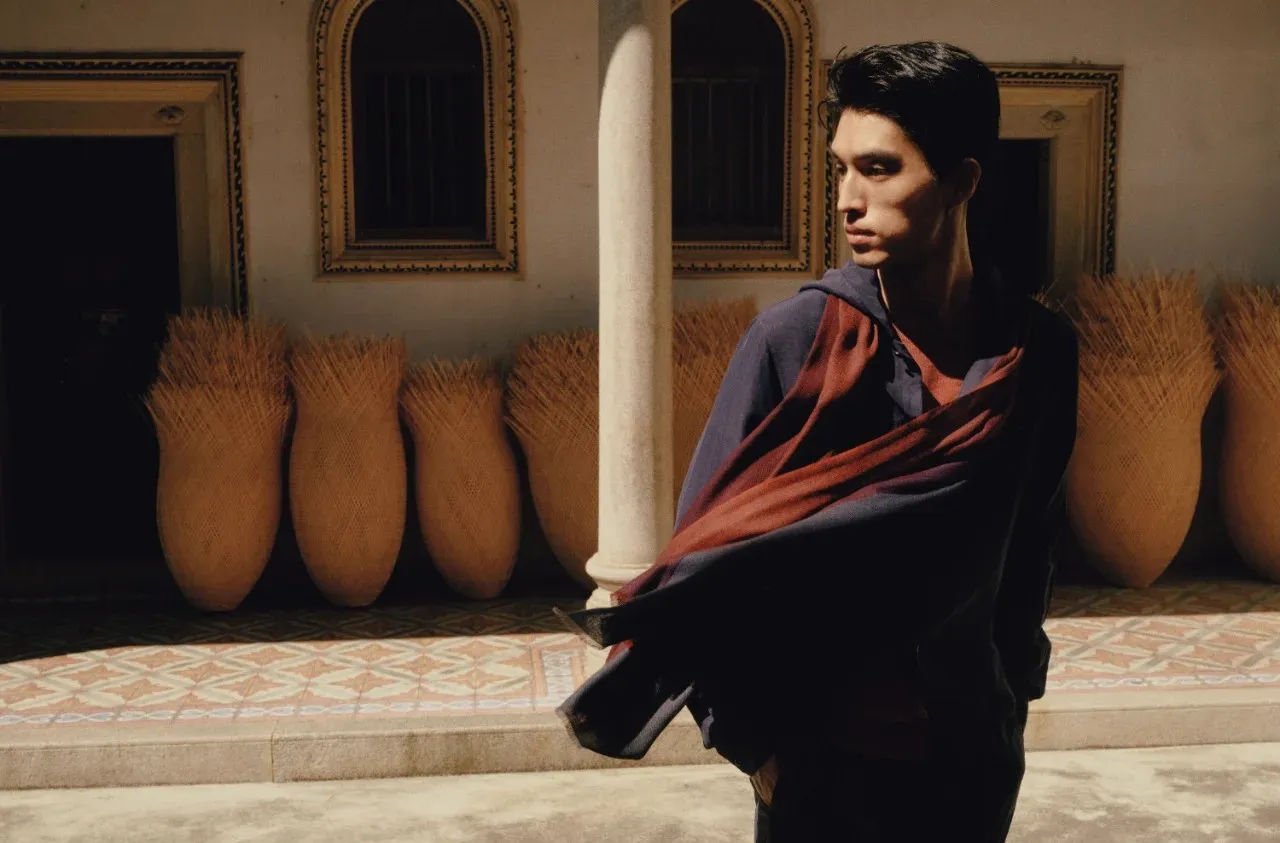Lessons in Experiential Luxury
How Retailers Like Printemps NYC Are Navigating the New Economic and Consumer Landscape

In today’s economic climate, luxury retailers face a significant challenge: aspirational customers, those who occasionally splurge on high-end items but aren’t part of the ultra-wealthy elite, are noticeably tightening their belts. This spending pullback is forcing luxury brands to rethink their approach, with customer experience, experiential marketing, and merchandising emerging as crucial strategies for maintaining engagement without necessarily driving immediate sales.
The Shifting Luxury Landscape
The luxury market has historically weathered economic downturns better than other sectors, but the current landscape presents unique challenges. Aspirational luxury customers, who represent a significant portion of the market’s volume, if not value, are becoming increasingly selective with their discretionary spending. These consumers still desire luxury experiences but are making fewer purchases. The challenge for many brands is how to make these aspirational shoppers feel special and seen using at-scale personalization and engaging customer experiences. In response, forward-thinking luxury retailers are pivoting from a transaction-first mindset to an experience-centric approach. The goal is clear: maintaining brand relationships during spending dips to ensure customer loyalty when wallets loosen again.
Printemps New York: An Inspirational Case Study in Experiential Luxury
A recent visit to the newly opened Printemps department store in New York offered a compelling example of this mindset in action. The French luxury retailer’s first U.S. location isn’t just a store: it’s a destination designed to immerse visitors in (French) luxury culture, whether they commit to a purchase or not.
Situated in the historic One Wall Street building in the Financial District and spanning 55,000 sqft, Printemps NYC was conceived with experience at its core. The landing page of the website very aptly features the slogan “NOT A DEPARTMENT STORE”. Instead, the 160-year-old Parisian retailer professes “the next chapter of brand transformation,” offering a unique conceptual experience effortlessly blending online and offline.

To wit, and delivering on this promise, the store is an experiential delight featuring rotating art installations and exhibits like the Jean Paul Gaultier Couture Exhibit, a central atrium designed for events and performances, and many carefully curated spaces like the Red Room, the Boudoir, the various culinary spaces and bars, in addition to the spa discovery and beauty spaces – all of these designed to truly prioritize discovery and delight, over traditional retail efficiency. Printemps’ website features a “Plan Your Visit” guide, much in the manner of museums or experiential spaces, that showcases what a customer can do at the store if they have an hour, a few hours, or all day at their disposal, underlining the highly experiential nature of this shopping experience.

What makes the Printemps approach particularly relevant in today’s market is how it acknowledges that not every visitor will become a buyer: conversion may or may not happen, or at least not immediately. Instead, the store serves as an enchanting showcase, a brand embassy, a cultural and culinary hub, offering experiential and cultural touchpoints and memorable moments coupled with advisor expertise and interaction that keep the brand relevant in consumers’ minds during spending pullbacks. This is the very essence of an immersive, educational, and entertaining customer experience.

The Emotional Armor: Customer Experience in an Inflationary Environment
In today’s environment of expected tariff-driven inflation, luxury brands face a particularly thorny challenge. When aspirational customers see price increases driven not by enhanced quality or craftsmanship but by economic policies and disruptions, the value proposition becomes harder to justify. This is precisely where exceptional customer experience and emotional resonance become not just marketing tools or nice-to-haves but strategic necessities and table stakes.
Luxury retailers like Printemps NYC understand that emotional connections can serve as a buffer against price sensitivity. When customers feel a deep alignment with a brand’s values and story, they’re more likely to rationalize premium pricing even in difficult economic times. They may postpone purchases, but they don’t give up on the relationship. The most effective luxury experiences create what psychologists call “anticipatory pleasure”, i.e. the enjoyment derived from looking forward to something. This can explain why consumers continue engaging with luxury brands through content and experiences even when immediate purchases aren’t feasible. The anticipation itself becomes a form of consumption that maintains brand loyalty during spending hiatuses. In this way, it becomes possible for brands to continue fostering engagement and brand loyalty without an immediate purchase, but with the high likelihood of future purchase intent and commitment.
The Power of “Slowing Down”
At the same time, as our own CXG data shows, the impact of dwell time and the ability to slow down the sale have a remarkable effect on purchase intent and conversion. Our proprietary benchmark data reveals a direct correlation between the time a client spends in-store and their purchase intention. The longer an advisor engages with a client in the store, the more likely the latter are to make a purchase:
- <10 minutes: Only 25% of clients expressed a definite intent to buy.
- 11–20 minutes: 40% showed strong purchase intent.
- 30+ minutes: The number jumps to 60%+.
This insight signals a clear opportunity for luxury brands: instead of rushing the sale, sales advisors should focus on crafting a refined, high-quality in-store experience that encourages clients to linger, engage, and ultimately purchase more. The likelihood of a store visit turning into actual conversion rises with increased dwell time, but even if the conversion does not happen the potential for future brand engagement and loyalty increases.

Experiential Content: The Bridge During Spending Gaps
Complementing physical experiences, content has become a crucial tool for luxury brands to maintain engagement without explicitly pushing sales. In inflationary periods, this content strategy takes on heightened importance to provide value that isn’t subject to tariffs or price increases. Effective experiential content includes:
- Behind-the-scenes glimpses into craftsmanship
- Immersive storytelling about brand heritage, values, and sustainability
- Cultural content that aligns with brand identity
- Educational content about materials, techniques, and quality markers
This content-as-experience approach serves multiple purposes: it justifies premium pricing by highlighting value beyond the physical product, creates emotional connections that transcend transactional relationships, and provides engaging touchpoints that don’t require purchasing. The pressure to purchase is minimized, with the opportunity to simply enjoy the experience freely given.
Storytelling as Economic Insulation
The most resilient luxury brands have always understood that they’re selling stories as much as products. In economically challenging times, this narrative dimension becomes their most valuable asset. At the ultra-luxury end of the spectrum, Patek Philippe, Hermes, and Baccarat are excellent examples. In the premium end of the spectrum, brands like Coach, Zara in their growing premium segment, and Swarovski are also mastering the art of storytelling. Through consistent storytelling across all touchpoints, department stores like Printemps create a coherent world that customers want to be part of, regardless of their immediate purchasing power. These narratives work most effectively when they:
- Connect to larger cultural movements and values
- Emphasize timelessness over trendy disposability
- Highlight human craftsmanship in an increasingly automated world
- Create a sense of belonging to an exclusive community
When an aspirational customer must choose between brands due to budget constraints, these emotional and narrative factors often become the deciding elements. The product they eventually purchase isn’t just an object but an entry point into a story they’ve already been participating in through experiences and content.
By investing in experiences and content that provide value irrespective of transactions, brands will:
- Maintain cultural relevance and mindshare
- Deepen emotional connections with the brand
- Educate consumers about quality and craftsmanship
- Create shareable moments that extend reach organically
- Build anticipation for future purchases
Emphasis on Luxury Customer Experience is the Long Game
The most sophisticated luxury retailers understand that today’s experience-only visitor could be tomorrow’s high-value client. By treating every interaction as an opportunity to demonstrate brand values, rather than just an opportunity to sell, retailers like Printemps NYC are playing the long game. In the current economic environment, this approach isn’t just good customer service, it’s a strategic necessity. Aspirational customers will eventually return to making luxury purchases, and their decisions will be heavily influenced by which brands maintained meaningful relationships and truly “saw” them during their spending hiatus.
Conclusion: Experience as Resilience Strategy
As luxury retailers face the reality of aspirational spending pullbacks, customer experience and experiential marketing aren’t just nice-to-have supplements to product offerings but essential components of business resilience. The Printemps NYC approach demonstrates how physical spaces, thoughtful curation, and immersive environments can maintain brand relevance even when transactions slow. In luxury retail’s new normal, the brands that will thrive are those that understand a fundamental truth: while consumers may temporarily stop buying luxury, they never stop desiring it. By creating experiences that tap into this desire, retailers can ensure they will remain the destination of choice when customers begin to spend again.



